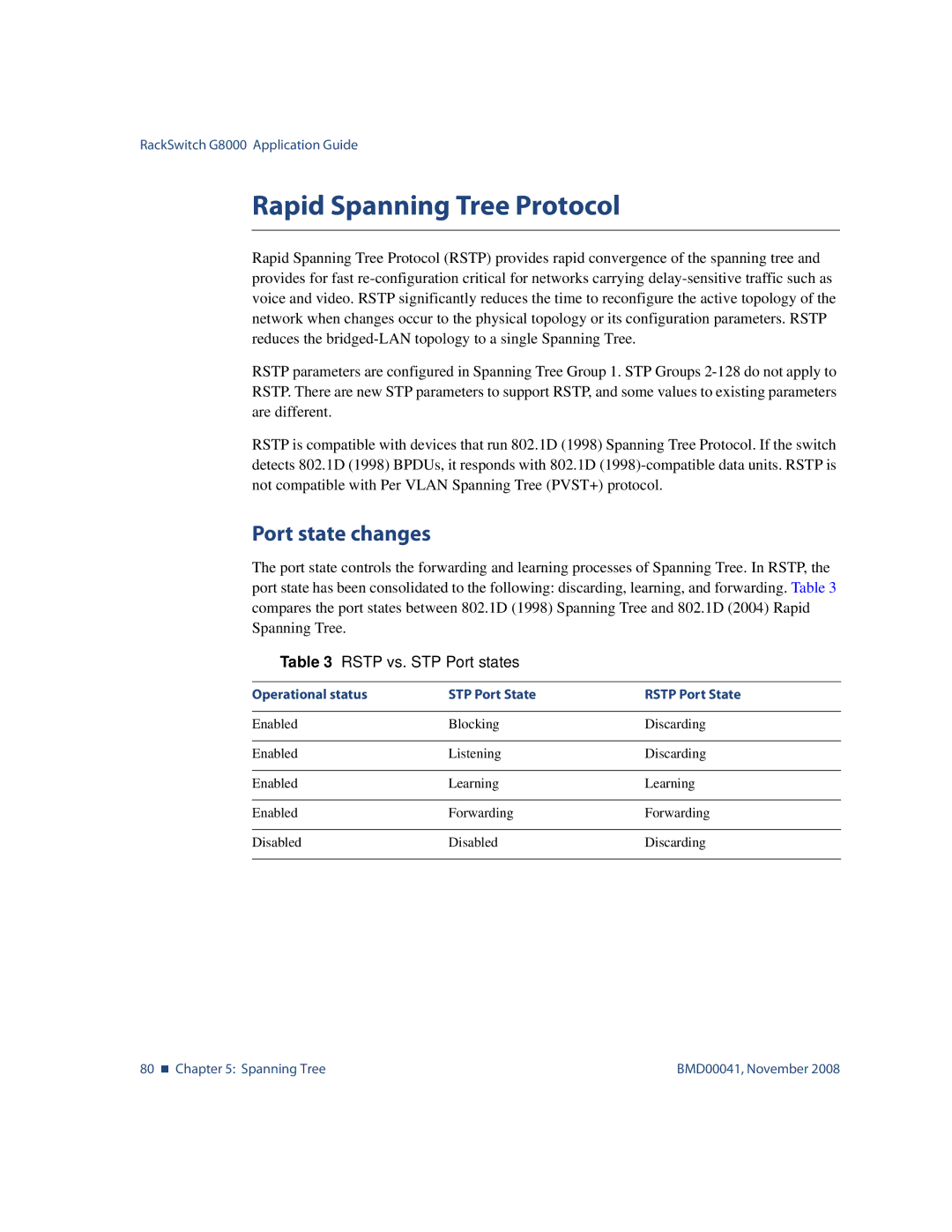
RackSwitch G8000 Application Guide
Rapid Spanning Tree Protocol
Rapid Spanning Tree Protocol (RSTP) provides rapid convergence of the spanning tree and provides for fast
RSTP parameters are configured in Spanning Tree Group 1. STP Groups
RSTP is compatible with devices that run 802.1D (1998) Spanning Tree Protocol. If the switch detects 802.1D (1998) BPDUs, it responds with 802.1D
Port state changes
The port state controls the forwarding and learning processes of Spanning Tree. In RSTP, the port state has been consolidated to the following: discarding, learning, and forwarding. Table 3 compares the port states between 802.1D (1998) Spanning Tree and 802.1D (2004) Rapid Spanning Tree.
Table 3 RSTP vs. STP Port states
Operational status | STP Port State | RSTP Port State |
|
|
|
Enabled | Blocking | Discarding |
|
|
|
Enabled | Listening | Discarding |
|
|
|
Enabled | Learning | Learning |
|
|
|
Enabled | Forwarding | Forwarding |
|
|
|
Disabled | Disabled | Discarding |
|
|
|
80 Chapter 5: Spanning Tree | BMD00041, November 2008 |
